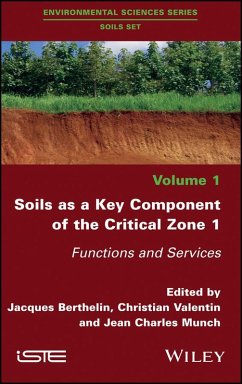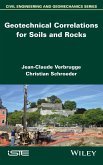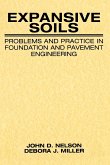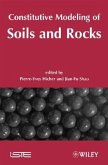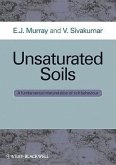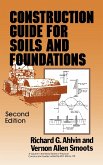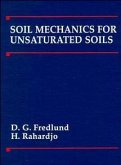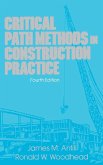Soils as a Key Component of the Critical Zone 1
Functions and Services
Herausgeber: Berthelin, Jacques; Munch, Jean Charles; Valentin, Christian
Soils as a Key Component of the Critical Zone 1
Functions and Services
Herausgeber: Berthelin, Jacques; Munch, Jean Charles; Valentin, Christian
- Gebundenes Buch
- Merkliste
- Auf die Merkliste
- Bewerten Bewerten
- Teilen
- Produkt teilen
- Produkterinnerung
- Produkterinnerung
This introductory book to the six volume series includes an introduction defining the critical zone for mankind that extends from tree canopy and the lower atmosphere to water table and unweathered rock. Soils play a crucial role through the functions and the services that they provide to mankind. The spatial and temporal variability of soils is represented by information systems whose importance, recent evolutions and increasingly performing applications in France and in the world must be underlined. The soil functions, discussed in this book, focus on the regulation of the water cycle,…mehr
Andere Kunden interessierten sich auch für
![Geotechnical Correlations for Soils and Rocks Geotechnical Correlations for Soils and Rocks]() Jean-Claude VerbruggeGeotechnical Correlations for Soils and Rocks164,99 €
Jean-Claude VerbruggeGeotechnical Correlations for Soils and Rocks164,99 €![Expansive Soils Expansive Soils]() John NelsonExpansive Soils154,99 €
John NelsonExpansive Soils154,99 €![Constitutive Modeling of Soils and Rocks Constitutive Modeling of Soils and Rocks]() Constitutive Modeling of Soils and Rocks290,99 €
Constitutive Modeling of Soils and Rocks290,99 €![Unsaturated Soils Unsaturated Soils]() E J MurrayUnsaturated Soils124,99 €
E J MurrayUnsaturated Soils124,99 €![Construction Guide for Soils and Foundations Construction Guide for Soils and Foundations]() Richard G AhlvinConstruction Guide for Soils and Foundations186,99 €
Richard G AhlvinConstruction Guide for Soils and Foundations186,99 €![Soil Mechanics for Unsaturated Soils Soil Mechanics for Unsaturated Soils]() Delwyn G FredlundSoil Mechanics for Unsaturated Soils194,99 €
Delwyn G FredlundSoil Mechanics for Unsaturated Soils194,99 €![Critical Path Methods in Construction Practice Critical Path Methods in Construction Practice]() James M AntillCritical Path Methods in Construction Practice186,99 €
James M AntillCritical Path Methods in Construction Practice186,99 €-
-
-
This introductory book to the six volume series includes an introduction defining the critical zone for mankind that extends from tree canopy and the lower atmosphere to water table and unweathered rock. Soils play a crucial role through the functions and the services that they provide to mankind. The spatial and temporal variability of soils is represented by information systems whose importance, recent evolutions and increasingly performing applications in France and in the world must be underlined. The soil functions, discussed in this book, focus on the regulation of the water cycle, biophysicochemical cycles and the habitat role of biodiversity. The main services presented are those related to the provision of agricultural, fodder and forest products, energy, as well as materials and the role of soil as infrastructure support. They also include the different cultural dimensions of soils, their representations being often linked to myths and rites, as well as their values of environmental and archaeological records. Finally, the issue is raised of an off-ground world.
Produktdetails
- Produktdetails
- Verlag: Wiley
- Seitenzahl: 352
- Erscheinungstermin: 16. Oktober 2018
- Englisch
- Abmessung: 239mm x 150mm x 23mm
- Gewicht: 590g
- ISBN-13: 9781786302151
- ISBN-10: 1786302152
- Artikelnr.: 53020334
- Herstellerkennzeichnung
- Libri GmbH
- Europaallee 1
- 36244 Bad Hersfeld
- gpsr@libri.de
- Verlag: Wiley
- Seitenzahl: 352
- Erscheinungstermin: 16. Oktober 2018
- Englisch
- Abmessung: 239mm x 150mm x 23mm
- Gewicht: 590g
- ISBN-13: 9781786302151
- ISBN-10: 1786302152
- Artikelnr.: 53020334
- Herstellerkennzeichnung
- Libri GmbH
- Europaallee 1
- 36244 Bad Hersfeld
- gpsr@libri.de
Jacques Berthelin, French National Center for Scientific Research, Paris, France Jean-Charles Munch, TUM School of Life Sciences Weihenstephan, Munich, Allemagne Christian Valentin, Institute for Research for Development, Paris, France
Foreword xiii
Chapter 1. Soils as a Key Component of the Critical Zone 1
Jacques BERTHELIN, Guilhem BOURRIÉ, Michel-Claude GIRARD, Guillaume
DHÉRISSARD and Christian VALENTIN
1.1. What are soils? 1
1.2. The Earth, land, soils, soil cover and the Critical Zone 2
1.3. The term "soil" has various meanings according to use and function
processes 5
1.4. The concept of soil varies according to the user 6
1.4.1. Agricultural sector 7
1.4.2. Scientific communities 7
1.4.3. Urban communities 8
1.4.4. Current pressures and questions 8
1.5. The approaches and procedures of soil scientists and pedologists 9
1.6. Two principles to take into account: geographical continuity and
multi-temporality 10
1.6.1. Principle of continuity 10
1.6.2. Principle of multi-temporality 13
1.7. Nature, organization and major modes of soil processes 15
1.7.1. Soils before the arrival of humans 15
1.7.2. Specifics and origins of the Earth's soils 17
1.7.3. The parameters controlling differentiation and diversity of soils 18
1.8. The functions and services of soils 23
1.8.1. Major functions 23
1.8.2. Services provided by soils 24
1.8.3. The role of soils within our culture and our history 25
1.9. The need and significance of soil information systems 29
1.10. Conclusion and recommendation 29
1.11. Bibliography 30
Chapter 2. Understanding Soils for Their More Efficient Management: A
National Soil Information System 35
Marion BARDY, Dominique ARROUAYS, Claudy JOLIVET, Bertrand LAROCHE,
Christine LE BAS, Manuel MARTIN, Céline RATIÉ, Anne C. RICHER-DE-FORGES,
Nicolas SABY, Véronique ANTONI, Antonio BISPO, Michel BROSSARD, Jean-Luc
FORT, Joëlle SAUTER and Chantal GASCUEL
2.1. Introduction 35
2.2. The inventory and monitoring of soils in Europe and in the world 36
2.3. National mechanisms for the acquisition of soil data 37
2.3.1. Issues and demands 37
2.3.2. Structuring of national data collection mechanisms 38
2.4. Data exploitation for the production of maps and indicators 44
2.5. Dissemination and availability of data 49
2.5.1. A national soil information system focused on data dissemination 49
2.5.2. A progressive enrichment of data and metadata supply 50
2.5.3. Assisting the use, improvement and control of data 52
2.6. Conclusion 52
2.7. Bibliography 53
Chapter 3. Soils and Regulation of the Hydrological Cycle 9
Marc VOLTZ, Cécile DAGÈS, Laurent PRÉVOT and Ary BRUAND
3.1. The soil - facilitator within the hydrological cycle 59
3.2. Soil control mechanisms 61
3.2.1. Infiltration-runoff partition 61
3.2.2. Aquifer recharge 65
3.2.3. Evaporation and transpiration flows 67
3.2.4. Capillary rise 70
3.2.5. Soil water budget 71
3.2.6. Hydrological flows along hillslopes 72
3.3. Impacts on the hydrological cycle at soil cover scale 74
3.3.1. Influence of soil and land use variations 75
3.3.2. Influence of land use changes 77
3.3.3. Influence of landscape infrastructures 78
3.4. Conclusions 79
Chapter 4. Soils as Bio-physicochemical Reactors 81
Fabienne TROLARD and Guilhem BOURRIÉ
4.1. What is a reactor? 81
4.2. Soil components 85
4.3. Reactivity drivers 86
4.4. Main reactions within soils 90
4.4.1. Master variables: pH and pe 90
4.4.2. Acid-base reactions 91
4.4.3. Reactions of oxido-reduction 94
4.4.4. Degradation of organic matter 95
4.5. Biogeochemical evolution of the Earth's surface and the consequences
for soils 96
4.5.1. Availability of chemical elements changed with the Earth's evolution
96
4.5.2. The evolution of the Earth's reactor imposed the evolution of living
organisms 99
4.5.3. Emergence of the "soil" function within the Critical Zone 101
4.6. Soil, biogeochemical reactor of soil formation 103
4.6.1. Vertical dynamics of soils: the lowering of horizons within
landscapes 105
4.6.2. Lateral dynamics of soil and transformations of soil covers 107
4.6.3. Lateral dynamics by epigenesis (replacement) 111
4.7. Soil structure: a case of "soft matter" 112
4.8. Bibliography 113
Chapter 5. Soils are Biosystems, Habitats and Reserves of Biodiversity 117
Jacques BERTHELIN, Éric BLANCHART, Jean TRAP and Jean Charles MUNCH
5.1. Introduction 117
5.2. Emergence and development of microbial ecology and soil biology 118
5.2.1. Discovery of the microbial world, a turning point in the knowledge
of the functioning of soil-plant systems 118
5.2.2. Discovery of the role of fauna and development of soil biology 119
5.3. Soil microbial communities 119
5.3.1. Richness and diversity of microbial communities 119
5.3.2. Evolution of methodologies in soil microbial ecology 123
5.4. Diversity of energy and nutritional pathways of microorganisms, key
players in biogeochemical cycles 124
5.4.1. Heterotrophy, autotrophy and extreme environments 124
5.4.2. Soils, environments where life is active with or without oxygen 125
5.5. Richness and diversity of soil fauna 126
5.5.1. Diversity of soil fauna 126
5.5.2. Classification by size 127
5.5.3. Functional classification sensu lato 127
5.5.4. Characterization of the fauna 128
5.6. Soils, environments with energy and nutritional conditions favorable
to microbial life and fauna 128
5.7. Determinants and remarkable sites of diversity and soil biological
activities 129
5.7.1. Parameters and major activity sites 129
5.7.2. Impact of land use 130
5.7.3. Humus, integrators and developers of specific biological activities
131
5.7.4. The rhizosphere, a site of major interactions of soil-plant systems
132
5.8. Tools for understanding the habitats of soil organisms 133
5.9. Specificities of the soil fauna 133
5.9.1. Microregulators 134
5.9.2. The communities of organisms called "engineers" 134
5.10. Soil organisms: ecosystem service actors 135
5.11. Soil quality indicators 137
5.11.1. Soil organisms as indicators 137
5.11.2. Ecological functions as indicators 138
5.12. Conclusion and perspectives 138
5.13. Bibliography 139
Chapter 6. Soils, a Factor in Plant Production:Agroecosystems 147
Claire CHENU, Jean ROGER-ESTRADE, Chantal GASCUEL and Christian WALTER
6.1. Introduction 147
6.2. Evolution of soil-agriculture relationship over the last few decades
148
6.3. Agricultural capability of soils 150
6.3.1. How do we define the agricultural capability of a soil? 150
6.3.2. Limited soil resources on a global scale 154
6.4. Agricultural practices that alter soil properties 155
6.5. Toward sustainable management of agricultural soils 158
6.6. Conclusion 161
Chapter 7. Forest Soils: Characteristics and Sustainability 163
Jacques RANGER
7.1. Forest soils 163
7.2. Bioavailability of nutrients: soil-plant coevolution and the role of
the biological cycle 165
7.3. Concept of forest soil fertility 170
7.4. Specificity of forest soils compared to agricultural soils 171
7.5. Threats to forest soils 175
7.5.1. Acidification 175
7.5.2. Physical degradation 177
7.5.3. The particular problem of organic carbon: soil fertility and climate
change 179
7.5.4. Maintaining biodiversity 180
7.5.5. Pollution 181
7.5.6. Disappearance of forest soils 181
7.6. Conclusions 181
7.7. Bibliography 183
Chapter 8. Soils and Energy 187
Isabelle FEIX
8.1. Soils at the heart of global issues 187
8.2. Energy context 188
8.3. Soils, energy supports and energy suppliers 190
8.3.1. Forest and agricultural biomass production: for bioenergy production
190
8.3.2. Physical supports of renewable energy: ground-mounted photovoltaic
power plants and onshore wind turbines 190
8.3.3. Heat and freshness supplies: horizontal superficial geothermal
energy and climatic wells 191
8.3.4. Peat: formerly used as a biofuel 191
8.4. The consequences of energy production on mobilization, occupation and
land-use change 192
8.4.1. Comparison of land use intensities and land area occupations for
energy production 194
8.4.2. Comparison of land use changes related to different energies 202
8.4.3. Consequences of energy policies for land mobilization and LUC 204
8.4.4. Optimization of land use 206
8.5. Impacts of energy production on soil loss, degradation and quality 207
8.5.1. Impacts common to all energies 207
8.5.2. Peat 208
8.5.3. Fossil fuels 208
8.5.4. Nuclear energy 208
8.5.5. Solar and wind energies 209
8.5.6. Bioenergies 210
8.6. Conclusion 217
8.7. Bibliography 219
Chapter 9. Soils, Materials, and Infrastructure Supports 233
Guilhem BOURRIÉ and Fabienne TROLARD
9.1. The use of "raw" soils as building materials 233
9.2. Soils, infrastructure supports 236
9.3. The classical civil engineering versus the physical approach of
granular media 237
9.4. Consumption of agricultural land, forest or natural areas by urban
sprawl 239
9.5. The use of separate particle size fractions 242
9.5.1. The use of coarse fractions 242
9.5.2. The use of the clay fraction as material and reaction support 242
9.5.3. The use of the soil organic fraction 243
9.5.4. The use of soil oxides 243
9.6. The use of chemical elements after extraction and treatment 243
9.7. Bibliography 244
Chapter 10. Cultural Dimensions of Soils 247
Suzanne MÉRIAUX and Michel-Claude GIRARD
10.1. Soil representations - the Earth celebrated 247
10.1.1. The written Earth 248
10.1.2. The illustrated Earth 251
10.1.3. The Earth with sound 254
10.2. Humanity, Earth and soil: myths and rites 258
10.2.1. Defining myths 259
10.2.2. Earth and soils in myths 259
10.2.3. Myths 261
10.2.4. Rites 268
10.2.5. Analogies with the pedological approach? 269
10.2.6. Links between humans and earth/soils 270
10.2.7. Conclusion 271
10.3. Bibliography 272
Chapter 11. Environmental and Societal Memories of Soils 275
Marie-Agnès COURTY
11.1. Ancient soils: archives of human history 275
11.1.1. Objectives 275
11.1.2. Soil memory and climate change 276
11.1.3. Memory of ancient soils and societies 278
11.2. Methods of studying soil memory 279
11.2.1. The field approach 279
11.2.2. Analytical characterization 281
11.3. Reading the ancient soil memory 282
11.3.1. Foundations 282
11.3.2. Sedimentary features 283
11.3.3. Combustion features 285
11.3.4. Soil features 287
11.4. Conclusion and perspectives 294
11.5. Bibliography 295
Chapter 12. A Mesological Point of View 299
Pierre DONADIEU
12.1. Soil ubiquity 299
12.2. Soil as 301
12.3. Off-ground? 303
12.4. Living off-ground 304
12.5. Limits of the off-ground 307
12.6. Conclusion 309
12.7. Bibliography 309
List of Authors 311
Index 315
Chapter 1. Soils as a Key Component of the Critical Zone 1
Jacques BERTHELIN, Guilhem BOURRIÉ, Michel-Claude GIRARD, Guillaume
DHÉRISSARD and Christian VALENTIN
1.1. What are soils? 1
1.2. The Earth, land, soils, soil cover and the Critical Zone 2
1.3. The term "soil" has various meanings according to use and function
processes 5
1.4. The concept of soil varies according to the user 6
1.4.1. Agricultural sector 7
1.4.2. Scientific communities 7
1.4.3. Urban communities 8
1.4.4. Current pressures and questions 8
1.5. The approaches and procedures of soil scientists and pedologists 9
1.6. Two principles to take into account: geographical continuity and
multi-temporality 10
1.6.1. Principle of continuity 10
1.6.2. Principle of multi-temporality 13
1.7. Nature, organization and major modes of soil processes 15
1.7.1. Soils before the arrival of humans 15
1.7.2. Specifics and origins of the Earth's soils 17
1.7.3. The parameters controlling differentiation and diversity of soils 18
1.8. The functions and services of soils 23
1.8.1. Major functions 23
1.8.2. Services provided by soils 24
1.8.3. The role of soils within our culture and our history 25
1.9. The need and significance of soil information systems 29
1.10. Conclusion and recommendation 29
1.11. Bibliography 30
Chapter 2. Understanding Soils for Their More Efficient Management: A
National Soil Information System 35
Marion BARDY, Dominique ARROUAYS, Claudy JOLIVET, Bertrand LAROCHE,
Christine LE BAS, Manuel MARTIN, Céline RATIÉ, Anne C. RICHER-DE-FORGES,
Nicolas SABY, Véronique ANTONI, Antonio BISPO, Michel BROSSARD, Jean-Luc
FORT, Joëlle SAUTER and Chantal GASCUEL
2.1. Introduction 35
2.2. The inventory and monitoring of soils in Europe and in the world 36
2.3. National mechanisms for the acquisition of soil data 37
2.3.1. Issues and demands 37
2.3.2. Structuring of national data collection mechanisms 38
2.4. Data exploitation for the production of maps and indicators 44
2.5. Dissemination and availability of data 49
2.5.1. A national soil information system focused on data dissemination 49
2.5.2. A progressive enrichment of data and metadata supply 50
2.5.3. Assisting the use, improvement and control of data 52
2.6. Conclusion 52
2.7. Bibliography 53
Chapter 3. Soils and Regulation of the Hydrological Cycle 9
Marc VOLTZ, Cécile DAGÈS, Laurent PRÉVOT and Ary BRUAND
3.1. The soil - facilitator within the hydrological cycle 59
3.2. Soil control mechanisms 61
3.2.1. Infiltration-runoff partition 61
3.2.2. Aquifer recharge 65
3.2.3. Evaporation and transpiration flows 67
3.2.4. Capillary rise 70
3.2.5. Soil water budget 71
3.2.6. Hydrological flows along hillslopes 72
3.3. Impacts on the hydrological cycle at soil cover scale 74
3.3.1. Influence of soil and land use variations 75
3.3.2. Influence of land use changes 77
3.3.3. Influence of landscape infrastructures 78
3.4. Conclusions 79
Chapter 4. Soils as Bio-physicochemical Reactors 81
Fabienne TROLARD and Guilhem BOURRIÉ
4.1. What is a reactor? 81
4.2. Soil components 85
4.3. Reactivity drivers 86
4.4. Main reactions within soils 90
4.4.1. Master variables: pH and pe 90
4.4.2. Acid-base reactions 91
4.4.3. Reactions of oxido-reduction 94
4.4.4. Degradation of organic matter 95
4.5. Biogeochemical evolution of the Earth's surface and the consequences
for soils 96
4.5.1. Availability of chemical elements changed with the Earth's evolution
96
4.5.2. The evolution of the Earth's reactor imposed the evolution of living
organisms 99
4.5.3. Emergence of the "soil" function within the Critical Zone 101
4.6. Soil, biogeochemical reactor of soil formation 103
4.6.1. Vertical dynamics of soils: the lowering of horizons within
landscapes 105
4.6.2. Lateral dynamics of soil and transformations of soil covers 107
4.6.3. Lateral dynamics by epigenesis (replacement) 111
4.7. Soil structure: a case of "soft matter" 112
4.8. Bibliography 113
Chapter 5. Soils are Biosystems, Habitats and Reserves of Biodiversity 117
Jacques BERTHELIN, Éric BLANCHART, Jean TRAP and Jean Charles MUNCH
5.1. Introduction 117
5.2. Emergence and development of microbial ecology and soil biology 118
5.2.1. Discovery of the microbial world, a turning point in the knowledge
of the functioning of soil-plant systems 118
5.2.2. Discovery of the role of fauna and development of soil biology 119
5.3. Soil microbial communities 119
5.3.1. Richness and diversity of microbial communities 119
5.3.2. Evolution of methodologies in soil microbial ecology 123
5.4. Diversity of energy and nutritional pathways of microorganisms, key
players in biogeochemical cycles 124
5.4.1. Heterotrophy, autotrophy and extreme environments 124
5.4.2. Soils, environments where life is active with or without oxygen 125
5.5. Richness and diversity of soil fauna 126
5.5.1. Diversity of soil fauna 126
5.5.2. Classification by size 127
5.5.3. Functional classification sensu lato 127
5.5.4. Characterization of the fauna 128
5.6. Soils, environments with energy and nutritional conditions favorable
to microbial life and fauna 128
5.7. Determinants and remarkable sites of diversity and soil biological
activities 129
5.7.1. Parameters and major activity sites 129
5.7.2. Impact of land use 130
5.7.3. Humus, integrators and developers of specific biological activities
131
5.7.4. The rhizosphere, a site of major interactions of soil-plant systems
132
5.8. Tools for understanding the habitats of soil organisms 133
5.9. Specificities of the soil fauna 133
5.9.1. Microregulators 134
5.9.2. The communities of organisms called "engineers" 134
5.10. Soil organisms: ecosystem service actors 135
5.11. Soil quality indicators 137
5.11.1. Soil organisms as indicators 137
5.11.2. Ecological functions as indicators 138
5.12. Conclusion and perspectives 138
5.13. Bibliography 139
Chapter 6. Soils, a Factor in Plant Production:Agroecosystems 147
Claire CHENU, Jean ROGER-ESTRADE, Chantal GASCUEL and Christian WALTER
6.1. Introduction 147
6.2. Evolution of soil-agriculture relationship over the last few decades
148
6.3. Agricultural capability of soils 150
6.3.1. How do we define the agricultural capability of a soil? 150
6.3.2. Limited soil resources on a global scale 154
6.4. Agricultural practices that alter soil properties 155
6.5. Toward sustainable management of agricultural soils 158
6.6. Conclusion 161
Chapter 7. Forest Soils: Characteristics and Sustainability 163
Jacques RANGER
7.1. Forest soils 163
7.2. Bioavailability of nutrients: soil-plant coevolution and the role of
the biological cycle 165
7.3. Concept of forest soil fertility 170
7.4. Specificity of forest soils compared to agricultural soils 171
7.5. Threats to forest soils 175
7.5.1. Acidification 175
7.5.2. Physical degradation 177
7.5.3. The particular problem of organic carbon: soil fertility and climate
change 179
7.5.4. Maintaining biodiversity 180
7.5.5. Pollution 181
7.5.6. Disappearance of forest soils 181
7.6. Conclusions 181
7.7. Bibliography 183
Chapter 8. Soils and Energy 187
Isabelle FEIX
8.1. Soils at the heart of global issues 187
8.2. Energy context 188
8.3. Soils, energy supports and energy suppliers 190
8.3.1. Forest and agricultural biomass production: for bioenergy production
190
8.3.2. Physical supports of renewable energy: ground-mounted photovoltaic
power plants and onshore wind turbines 190
8.3.3. Heat and freshness supplies: horizontal superficial geothermal
energy and climatic wells 191
8.3.4. Peat: formerly used as a biofuel 191
8.4. The consequences of energy production on mobilization, occupation and
land-use change 192
8.4.1. Comparison of land use intensities and land area occupations for
energy production 194
8.4.2. Comparison of land use changes related to different energies 202
8.4.3. Consequences of energy policies for land mobilization and LUC 204
8.4.4. Optimization of land use 206
8.5. Impacts of energy production on soil loss, degradation and quality 207
8.5.1. Impacts common to all energies 207
8.5.2. Peat 208
8.5.3. Fossil fuels 208
8.5.4. Nuclear energy 208
8.5.5. Solar and wind energies 209
8.5.6. Bioenergies 210
8.6. Conclusion 217
8.7. Bibliography 219
Chapter 9. Soils, Materials, and Infrastructure Supports 233
Guilhem BOURRIÉ and Fabienne TROLARD
9.1. The use of "raw" soils as building materials 233
9.2. Soils, infrastructure supports 236
9.3. The classical civil engineering versus the physical approach of
granular media 237
9.4. Consumption of agricultural land, forest or natural areas by urban
sprawl 239
9.5. The use of separate particle size fractions 242
9.5.1. The use of coarse fractions 242
9.5.2. The use of the clay fraction as material and reaction support 242
9.5.3. The use of the soil organic fraction 243
9.5.4. The use of soil oxides 243
9.6. The use of chemical elements after extraction and treatment 243
9.7. Bibliography 244
Chapter 10. Cultural Dimensions of Soils 247
Suzanne MÉRIAUX and Michel-Claude GIRARD
10.1. Soil representations - the Earth celebrated 247
10.1.1. The written Earth 248
10.1.2. The illustrated Earth 251
10.1.3. The Earth with sound 254
10.2. Humanity, Earth and soil: myths and rites 258
10.2.1. Defining myths 259
10.2.2. Earth and soils in myths 259
10.2.3. Myths 261
10.2.4. Rites 268
10.2.5. Analogies with the pedological approach? 269
10.2.6. Links between humans and earth/soils 270
10.2.7. Conclusion 271
10.3. Bibliography 272
Chapter 11. Environmental and Societal Memories of Soils 275
Marie-Agnès COURTY
11.1. Ancient soils: archives of human history 275
11.1.1. Objectives 275
11.1.2. Soil memory and climate change 276
11.1.3. Memory of ancient soils and societies 278
11.2. Methods of studying soil memory 279
11.2.1. The field approach 279
11.2.2. Analytical characterization 281
11.3. Reading the ancient soil memory 282
11.3.1. Foundations 282
11.3.2. Sedimentary features 283
11.3.3. Combustion features 285
11.3.4. Soil features 287
11.4. Conclusion and perspectives 294
11.5. Bibliography 295
Chapter 12. A Mesological Point of View 299
Pierre DONADIEU
12.1. Soil ubiquity 299
12.2. Soil as 301
12.3. Off-ground? 303
12.4. Living off-ground 304
12.5. Limits of the off-ground 307
12.6. Conclusion 309
12.7. Bibliography 309
List of Authors 311
Index 315
Foreword xiii
Chapter 1. Soils as a Key Component of the Critical Zone 1
Jacques BERTHELIN, Guilhem BOURRIÉ, Michel-Claude GIRARD, Guillaume
DHÉRISSARD and Christian VALENTIN
1.1. What are soils? 1
1.2. The Earth, land, soils, soil cover and the Critical Zone 2
1.3. The term "soil" has various meanings according to use and function
processes 5
1.4. The concept of soil varies according to the user 6
1.4.1. Agricultural sector 7
1.4.2. Scientific communities 7
1.4.3. Urban communities 8
1.4.4. Current pressures and questions 8
1.5. The approaches and procedures of soil scientists and pedologists 9
1.6. Two principles to take into account: geographical continuity and
multi-temporality 10
1.6.1. Principle of continuity 10
1.6.2. Principle of multi-temporality 13
1.7. Nature, organization and major modes of soil processes 15
1.7.1. Soils before the arrival of humans 15
1.7.2. Specifics and origins of the Earth's soils 17
1.7.3. The parameters controlling differentiation and diversity of soils 18
1.8. The functions and services of soils 23
1.8.1. Major functions 23
1.8.2. Services provided by soils 24
1.8.3. The role of soils within our culture and our history 25
1.9. The need and significance of soil information systems 29
1.10. Conclusion and recommendation 29
1.11. Bibliography 30
Chapter 2. Understanding Soils for Their More Efficient Management: A
National Soil Information System 35
Marion BARDY, Dominique ARROUAYS, Claudy JOLIVET, Bertrand LAROCHE,
Christine LE BAS, Manuel MARTIN, Céline RATIÉ, Anne C. RICHER-DE-FORGES,
Nicolas SABY, Véronique ANTONI, Antonio BISPO, Michel BROSSARD, Jean-Luc
FORT, Joëlle SAUTER and Chantal GASCUEL
2.1. Introduction 35
2.2. The inventory and monitoring of soils in Europe and in the world 36
2.3. National mechanisms for the acquisition of soil data 37
2.3.1. Issues and demands 37
2.3.2. Structuring of national data collection mechanisms 38
2.4. Data exploitation for the production of maps and indicators 44
2.5. Dissemination and availability of data 49
2.5.1. A national soil information system focused on data dissemination 49
2.5.2. A progressive enrichment of data and metadata supply 50
2.5.3. Assisting the use, improvement and control of data 52
2.6. Conclusion 52
2.7. Bibliography 53
Chapter 3. Soils and Regulation of the Hydrological Cycle 9
Marc VOLTZ, Cécile DAGÈS, Laurent PRÉVOT and Ary BRUAND
3.1. The soil - facilitator within the hydrological cycle 59
3.2. Soil control mechanisms 61
3.2.1. Infiltration-runoff partition 61
3.2.2. Aquifer recharge 65
3.2.3. Evaporation and transpiration flows 67
3.2.4. Capillary rise 70
3.2.5. Soil water budget 71
3.2.6. Hydrological flows along hillslopes 72
3.3. Impacts on the hydrological cycle at soil cover scale 74
3.3.1. Influence of soil and land use variations 75
3.3.2. Influence of land use changes 77
3.3.3. Influence of landscape infrastructures 78
3.4. Conclusions 79
Chapter 4. Soils as Bio-physicochemical Reactors 81
Fabienne TROLARD and Guilhem BOURRIÉ
4.1. What is a reactor? 81
4.2. Soil components 85
4.3. Reactivity drivers 86
4.4. Main reactions within soils 90
4.4.1. Master variables: pH and pe 90
4.4.2. Acid-base reactions 91
4.4.3. Reactions of oxido-reduction 94
4.4.4. Degradation of organic matter 95
4.5. Biogeochemical evolution of the Earth's surface and the consequences
for soils 96
4.5.1. Availability of chemical elements changed with the Earth's evolution
96
4.5.2. The evolution of the Earth's reactor imposed the evolution of living
organisms 99
4.5.3. Emergence of the "soil" function within the Critical Zone 101
4.6. Soil, biogeochemical reactor of soil formation 103
4.6.1. Vertical dynamics of soils: the lowering of horizons within
landscapes 105
4.6.2. Lateral dynamics of soil and transformations of soil covers 107
4.6.3. Lateral dynamics by epigenesis (replacement) 111
4.7. Soil structure: a case of "soft matter" 112
4.8. Bibliography 113
Chapter 5. Soils are Biosystems, Habitats and Reserves of Biodiversity 117
Jacques BERTHELIN, Éric BLANCHART, Jean TRAP and Jean Charles MUNCH
5.1. Introduction 117
5.2. Emergence and development of microbial ecology and soil biology 118
5.2.1. Discovery of the microbial world, a turning point in the knowledge
of the functioning of soil-plant systems 118
5.2.2. Discovery of the role of fauna and development of soil biology 119
5.3. Soil microbial communities 119
5.3.1. Richness and diversity of microbial communities 119
5.3.2. Evolution of methodologies in soil microbial ecology 123
5.4. Diversity of energy and nutritional pathways of microorganisms, key
players in biogeochemical cycles 124
5.4.1. Heterotrophy, autotrophy and extreme environments 124
5.4.2. Soils, environments where life is active with or without oxygen 125
5.5. Richness and diversity of soil fauna 126
5.5.1. Diversity of soil fauna 126
5.5.2. Classification by size 127
5.5.3. Functional classification sensu lato 127
5.5.4. Characterization of the fauna 128
5.6. Soils, environments with energy and nutritional conditions favorable
to microbial life and fauna 128
5.7. Determinants and remarkable sites of diversity and soil biological
activities 129
5.7.1. Parameters and major activity sites 129
5.7.2. Impact of land use 130
5.7.3. Humus, integrators and developers of specific biological activities
131
5.7.4. The rhizosphere, a site of major interactions of soil-plant systems
132
5.8. Tools for understanding the habitats of soil organisms 133
5.9. Specificities of the soil fauna 133
5.9.1. Microregulators 134
5.9.2. The communities of organisms called "engineers" 134
5.10. Soil organisms: ecosystem service actors 135
5.11. Soil quality indicators 137
5.11.1. Soil organisms as indicators 137
5.11.2. Ecological functions as indicators 138
5.12. Conclusion and perspectives 138
5.13. Bibliography 139
Chapter 6. Soils, a Factor in Plant Production:Agroecosystems 147
Claire CHENU, Jean ROGER-ESTRADE, Chantal GASCUEL and Christian WALTER
6.1. Introduction 147
6.2. Evolution of soil-agriculture relationship over the last few decades
148
6.3. Agricultural capability of soils 150
6.3.1. How do we define the agricultural capability of a soil? 150
6.3.2. Limited soil resources on a global scale 154
6.4. Agricultural practices that alter soil properties 155
6.5. Toward sustainable management of agricultural soils 158
6.6. Conclusion 161
Chapter 7. Forest Soils: Characteristics and Sustainability 163
Jacques RANGER
7.1. Forest soils 163
7.2. Bioavailability of nutrients: soil-plant coevolution and the role of
the biological cycle 165
7.3. Concept of forest soil fertility 170
7.4. Specificity of forest soils compared to agricultural soils 171
7.5. Threats to forest soils 175
7.5.1. Acidification 175
7.5.2. Physical degradation 177
7.5.3. The particular problem of organic carbon: soil fertility and climate
change 179
7.5.4. Maintaining biodiversity 180
7.5.5. Pollution 181
7.5.6. Disappearance of forest soils 181
7.6. Conclusions 181
7.7. Bibliography 183
Chapter 8. Soils and Energy 187
Isabelle FEIX
8.1. Soils at the heart of global issues 187
8.2. Energy context 188
8.3. Soils, energy supports and energy suppliers 190
8.3.1. Forest and agricultural biomass production: for bioenergy production
190
8.3.2. Physical supports of renewable energy: ground-mounted photovoltaic
power plants and onshore wind turbines 190
8.3.3. Heat and freshness supplies: horizontal superficial geothermal
energy and climatic wells 191
8.3.4. Peat: formerly used as a biofuel 191
8.4. The consequences of energy production on mobilization, occupation and
land-use change 192
8.4.1. Comparison of land use intensities and land area occupations for
energy production 194
8.4.2. Comparison of land use changes related to different energies 202
8.4.3. Consequences of energy policies for land mobilization and LUC 204
8.4.4. Optimization of land use 206
8.5. Impacts of energy production on soil loss, degradation and quality 207
8.5.1. Impacts common to all energies 207
8.5.2. Peat 208
8.5.3. Fossil fuels 208
8.5.4. Nuclear energy 208
8.5.5. Solar and wind energies 209
8.5.6. Bioenergies 210
8.6. Conclusion 217
8.7. Bibliography 219
Chapter 9. Soils, Materials, and Infrastructure Supports 233
Guilhem BOURRIÉ and Fabienne TROLARD
9.1. The use of "raw" soils as building materials 233
9.2. Soils, infrastructure supports 236
9.3. The classical civil engineering versus the physical approach of
granular media 237
9.4. Consumption of agricultural land, forest or natural areas by urban
sprawl 239
9.5. The use of separate particle size fractions 242
9.5.1. The use of coarse fractions 242
9.5.2. The use of the clay fraction as material and reaction support 242
9.5.3. The use of the soil organic fraction 243
9.5.4. The use of soil oxides 243
9.6. The use of chemical elements after extraction and treatment 243
9.7. Bibliography 244
Chapter 10. Cultural Dimensions of Soils 247
Suzanne MÉRIAUX and Michel-Claude GIRARD
10.1. Soil representations - the Earth celebrated 247
10.1.1. The written Earth 248
10.1.2. The illustrated Earth 251
10.1.3. The Earth with sound 254
10.2. Humanity, Earth and soil: myths and rites 258
10.2.1. Defining myths 259
10.2.2. Earth and soils in myths 259
10.2.3. Myths 261
10.2.4. Rites 268
10.2.5. Analogies with the pedological approach? 269
10.2.6. Links between humans and earth/soils 270
10.2.7. Conclusion 271
10.3. Bibliography 272
Chapter 11. Environmental and Societal Memories of Soils 275
Marie-Agnès COURTY
11.1. Ancient soils: archives of human history 275
11.1.1. Objectives 275
11.1.2. Soil memory and climate change 276
11.1.3. Memory of ancient soils and societies 278
11.2. Methods of studying soil memory 279
11.2.1. The field approach 279
11.2.2. Analytical characterization 281
11.3. Reading the ancient soil memory 282
11.3.1. Foundations 282
11.3.2. Sedimentary features 283
11.3.3. Combustion features 285
11.3.4. Soil features 287
11.4. Conclusion and perspectives 294
11.5. Bibliography 295
Chapter 12. A Mesological Point of View 299
Pierre DONADIEU
12.1. Soil ubiquity 299
12.2. Soil as 301
12.3. Off-ground? 303
12.4. Living off-ground 304
12.5. Limits of the off-ground 307
12.6. Conclusion 309
12.7. Bibliography 309
List of Authors 311
Index 315
Chapter 1. Soils as a Key Component of the Critical Zone 1
Jacques BERTHELIN, Guilhem BOURRIÉ, Michel-Claude GIRARD, Guillaume
DHÉRISSARD and Christian VALENTIN
1.1. What are soils? 1
1.2. The Earth, land, soils, soil cover and the Critical Zone 2
1.3. The term "soil" has various meanings according to use and function
processes 5
1.4. The concept of soil varies according to the user 6
1.4.1. Agricultural sector 7
1.4.2. Scientific communities 7
1.4.3. Urban communities 8
1.4.4. Current pressures and questions 8
1.5. The approaches and procedures of soil scientists and pedologists 9
1.6. Two principles to take into account: geographical continuity and
multi-temporality 10
1.6.1. Principle of continuity 10
1.6.2. Principle of multi-temporality 13
1.7. Nature, organization and major modes of soil processes 15
1.7.1. Soils before the arrival of humans 15
1.7.2. Specifics and origins of the Earth's soils 17
1.7.3. The parameters controlling differentiation and diversity of soils 18
1.8. The functions and services of soils 23
1.8.1. Major functions 23
1.8.2. Services provided by soils 24
1.8.3. The role of soils within our culture and our history 25
1.9. The need and significance of soil information systems 29
1.10. Conclusion and recommendation 29
1.11. Bibliography 30
Chapter 2. Understanding Soils for Their More Efficient Management: A
National Soil Information System 35
Marion BARDY, Dominique ARROUAYS, Claudy JOLIVET, Bertrand LAROCHE,
Christine LE BAS, Manuel MARTIN, Céline RATIÉ, Anne C. RICHER-DE-FORGES,
Nicolas SABY, Véronique ANTONI, Antonio BISPO, Michel BROSSARD, Jean-Luc
FORT, Joëlle SAUTER and Chantal GASCUEL
2.1. Introduction 35
2.2. The inventory and monitoring of soils in Europe and in the world 36
2.3. National mechanisms for the acquisition of soil data 37
2.3.1. Issues and demands 37
2.3.2. Structuring of national data collection mechanisms 38
2.4. Data exploitation for the production of maps and indicators 44
2.5. Dissemination and availability of data 49
2.5.1. A national soil information system focused on data dissemination 49
2.5.2. A progressive enrichment of data and metadata supply 50
2.5.3. Assisting the use, improvement and control of data 52
2.6. Conclusion 52
2.7. Bibliography 53
Chapter 3. Soils and Regulation of the Hydrological Cycle 9
Marc VOLTZ, Cécile DAGÈS, Laurent PRÉVOT and Ary BRUAND
3.1. The soil - facilitator within the hydrological cycle 59
3.2. Soil control mechanisms 61
3.2.1. Infiltration-runoff partition 61
3.2.2. Aquifer recharge 65
3.2.3. Evaporation and transpiration flows 67
3.2.4. Capillary rise 70
3.2.5. Soil water budget 71
3.2.6. Hydrological flows along hillslopes 72
3.3. Impacts on the hydrological cycle at soil cover scale 74
3.3.1. Influence of soil and land use variations 75
3.3.2. Influence of land use changes 77
3.3.3. Influence of landscape infrastructures 78
3.4. Conclusions 79
Chapter 4. Soils as Bio-physicochemical Reactors 81
Fabienne TROLARD and Guilhem BOURRIÉ
4.1. What is a reactor? 81
4.2. Soil components 85
4.3. Reactivity drivers 86
4.4. Main reactions within soils 90
4.4.1. Master variables: pH and pe 90
4.4.2. Acid-base reactions 91
4.4.3. Reactions of oxido-reduction 94
4.4.4. Degradation of organic matter 95
4.5. Biogeochemical evolution of the Earth's surface and the consequences
for soils 96
4.5.1. Availability of chemical elements changed with the Earth's evolution
96
4.5.2. The evolution of the Earth's reactor imposed the evolution of living
organisms 99
4.5.3. Emergence of the "soil" function within the Critical Zone 101
4.6. Soil, biogeochemical reactor of soil formation 103
4.6.1. Vertical dynamics of soils: the lowering of horizons within
landscapes 105
4.6.2. Lateral dynamics of soil and transformations of soil covers 107
4.6.3. Lateral dynamics by epigenesis (replacement) 111
4.7. Soil structure: a case of "soft matter" 112
4.8. Bibliography 113
Chapter 5. Soils are Biosystems, Habitats and Reserves of Biodiversity 117
Jacques BERTHELIN, Éric BLANCHART, Jean TRAP and Jean Charles MUNCH
5.1. Introduction 117
5.2. Emergence and development of microbial ecology and soil biology 118
5.2.1. Discovery of the microbial world, a turning point in the knowledge
of the functioning of soil-plant systems 118
5.2.2. Discovery of the role of fauna and development of soil biology 119
5.3. Soil microbial communities 119
5.3.1. Richness and diversity of microbial communities 119
5.3.2. Evolution of methodologies in soil microbial ecology 123
5.4. Diversity of energy and nutritional pathways of microorganisms, key
players in biogeochemical cycles 124
5.4.1. Heterotrophy, autotrophy and extreme environments 124
5.4.2. Soils, environments where life is active with or without oxygen 125
5.5. Richness and diversity of soil fauna 126
5.5.1. Diversity of soil fauna 126
5.5.2. Classification by size 127
5.5.3. Functional classification sensu lato 127
5.5.4. Characterization of the fauna 128
5.6. Soils, environments with energy and nutritional conditions favorable
to microbial life and fauna 128
5.7. Determinants and remarkable sites of diversity and soil biological
activities 129
5.7.1. Parameters and major activity sites 129
5.7.2. Impact of land use 130
5.7.3. Humus, integrators and developers of specific biological activities
131
5.7.4. The rhizosphere, a site of major interactions of soil-plant systems
132
5.8. Tools for understanding the habitats of soil organisms 133
5.9. Specificities of the soil fauna 133
5.9.1. Microregulators 134
5.9.2. The communities of organisms called "engineers" 134
5.10. Soil organisms: ecosystem service actors 135
5.11. Soil quality indicators 137
5.11.1. Soil organisms as indicators 137
5.11.2. Ecological functions as indicators 138
5.12. Conclusion and perspectives 138
5.13. Bibliography 139
Chapter 6. Soils, a Factor in Plant Production:Agroecosystems 147
Claire CHENU, Jean ROGER-ESTRADE, Chantal GASCUEL and Christian WALTER
6.1. Introduction 147
6.2. Evolution of soil-agriculture relationship over the last few decades
148
6.3. Agricultural capability of soils 150
6.3.1. How do we define the agricultural capability of a soil? 150
6.3.2. Limited soil resources on a global scale 154
6.4. Agricultural practices that alter soil properties 155
6.5. Toward sustainable management of agricultural soils 158
6.6. Conclusion 161
Chapter 7. Forest Soils: Characteristics and Sustainability 163
Jacques RANGER
7.1. Forest soils 163
7.2. Bioavailability of nutrients: soil-plant coevolution and the role of
the biological cycle 165
7.3. Concept of forest soil fertility 170
7.4. Specificity of forest soils compared to agricultural soils 171
7.5. Threats to forest soils 175
7.5.1. Acidification 175
7.5.2. Physical degradation 177
7.5.3. The particular problem of organic carbon: soil fertility and climate
change 179
7.5.4. Maintaining biodiversity 180
7.5.5. Pollution 181
7.5.6. Disappearance of forest soils 181
7.6. Conclusions 181
7.7. Bibliography 183
Chapter 8. Soils and Energy 187
Isabelle FEIX
8.1. Soils at the heart of global issues 187
8.2. Energy context 188
8.3. Soils, energy supports and energy suppliers 190
8.3.1. Forest and agricultural biomass production: for bioenergy production
190
8.3.2. Physical supports of renewable energy: ground-mounted photovoltaic
power plants and onshore wind turbines 190
8.3.3. Heat and freshness supplies: horizontal superficial geothermal
energy and climatic wells 191
8.3.4. Peat: formerly used as a biofuel 191
8.4. The consequences of energy production on mobilization, occupation and
land-use change 192
8.4.1. Comparison of land use intensities and land area occupations for
energy production 194
8.4.2. Comparison of land use changes related to different energies 202
8.4.3. Consequences of energy policies for land mobilization and LUC 204
8.4.4. Optimization of land use 206
8.5. Impacts of energy production on soil loss, degradation and quality 207
8.5.1. Impacts common to all energies 207
8.5.2. Peat 208
8.5.3. Fossil fuels 208
8.5.4. Nuclear energy 208
8.5.5. Solar and wind energies 209
8.5.6. Bioenergies 210
8.6. Conclusion 217
8.7. Bibliography 219
Chapter 9. Soils, Materials, and Infrastructure Supports 233
Guilhem BOURRIÉ and Fabienne TROLARD
9.1. The use of "raw" soils as building materials 233
9.2. Soils, infrastructure supports 236
9.3. The classical civil engineering versus the physical approach of
granular media 237
9.4. Consumption of agricultural land, forest or natural areas by urban
sprawl 239
9.5. The use of separate particle size fractions 242
9.5.1. The use of coarse fractions 242
9.5.2. The use of the clay fraction as material and reaction support 242
9.5.3. The use of the soil organic fraction 243
9.5.4. The use of soil oxides 243
9.6. The use of chemical elements after extraction and treatment 243
9.7. Bibliography 244
Chapter 10. Cultural Dimensions of Soils 247
Suzanne MÉRIAUX and Michel-Claude GIRARD
10.1. Soil representations - the Earth celebrated 247
10.1.1. The written Earth 248
10.1.2. The illustrated Earth 251
10.1.3. The Earth with sound 254
10.2. Humanity, Earth and soil: myths and rites 258
10.2.1. Defining myths 259
10.2.2. Earth and soils in myths 259
10.2.3. Myths 261
10.2.4. Rites 268
10.2.5. Analogies with the pedological approach? 269
10.2.6. Links between humans and earth/soils 270
10.2.7. Conclusion 271
10.3. Bibliography 272
Chapter 11. Environmental and Societal Memories of Soils 275
Marie-Agnès COURTY
11.1. Ancient soils: archives of human history 275
11.1.1. Objectives 275
11.1.2. Soil memory and climate change 276
11.1.3. Memory of ancient soils and societies 278
11.2. Methods of studying soil memory 279
11.2.1. The field approach 279
11.2.2. Analytical characterization 281
11.3. Reading the ancient soil memory 282
11.3.1. Foundations 282
11.3.2. Sedimentary features 283
11.3.3. Combustion features 285
11.3.4. Soil features 287
11.4. Conclusion and perspectives 294
11.5. Bibliography 295
Chapter 12. A Mesological Point of View 299
Pierre DONADIEU
12.1. Soil ubiquity 299
12.2. Soil as 301
12.3. Off-ground? 303
12.4. Living off-ground 304
12.5. Limits of the off-ground 307
12.6. Conclusion 309
12.7. Bibliography 309
List of Authors 311
Index 315

